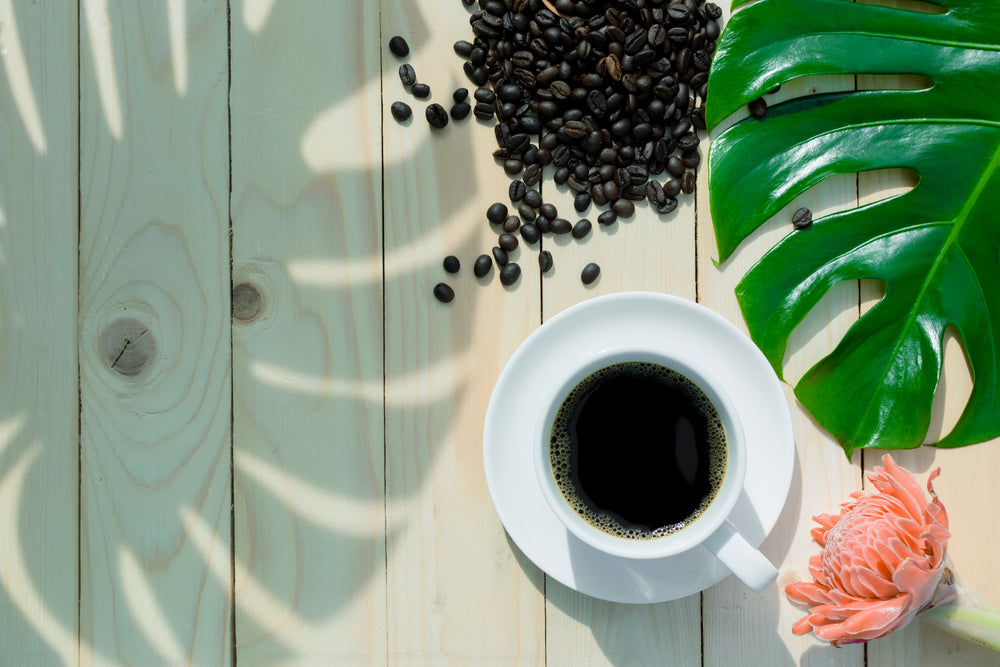Your Cart is Empty
Menu


Kona Coffee: A Hawaiian Heritage
December 14, 2018 4 min read
Kona Coffee: A Hawaiian Heritage
Kona Coffee is known for its tantalizing taste when roasted properly. Kona coffee beans are responsible for some of the most prized coffees in the world, valued for their mild, subtle, yet complex flavors. Except for a few areas along the California coast, Hawaii is the only state in the US that has appropriate conditions for farming coffee. These reserve coffees set themselves apart from basic coffee by their use of special beans, perfect growing conditions and special ways of processing the coffee beans from coffee tree to the coffee cup.
When was Kona Coffee First Introduced to Hawaii?
The first attempt to grow coffee in Hawaii is credited to the horticultural experimenter don Francisco de Paula Marin. Marin introduced numerous plant species to the Hawaiian Islands. Coffee beans and coffee tree cuttings from Brazil were originally brought to Oahu in 1825. By 1828, Kona coffee beans were growing successfully on the Big Island, proving to be an extremely successful agricultural product and cultural phenomenon. By the 1850s, Kona Coffee was recognized as a brand. In the late 1800s, the Brazilian coffee trees were replaced with Guatemalan coffee trees from which today's coffee trees are descended.
Between 1885 and 1925, nearly 180,000 Japanese emigrated and many Japanese who were in search of autonomy found their way to the coffee farming industry on the island of Kona. The coffee farming industry was rejuvenated by the arrival of the Japanese coffee farmers. They planted hundreds of acres of coffee trees, restored old fields and improved the process of drying technologies.
If you are ever on the Big Island of Hawaii, be sure to visit the Kona Coffee Living History Farm, the only living history coffee farm in the nation to have a rich immersive experience of the history of Kona coffee farming.
Why is Hawaii's Kona Coffee so Special?
Kona Coffee has been praised by none other than Mark Twain. In 1866, he stated that ‘Kona Coffee has a richer flavor than any other coffee, be it grown where it may and call it by what name you please.’
Kona Reserve Coffee is world-renowned and grown exclusively on the slopes of two volcanoes on the Big Island of Hawaii. To be called “Kona Coffee,” the coffee must be grown in a small area on the West Coast of the Big Island. The Kona Coffee growing region is about fifty square miles and is farmed largely by small landowners.

The climate and soil where the coffee is grown have ideal conditions for the coffee beans. The volcanic soil and western slopes of the Kona Mountains provide shelter and fertile lands. The weather is a beneficial factor in coffee growth, the sunny mornings combined with light afternoon rain provides natural irrigation. These conditions come together to create a bold coffee with a heady aroma, beautiful vibrant flavors.
How Many Coffee Farms grow Kona Coffee?
Kona Reserve Coffee beans were grown on small family coffee farms for much of their history, and for the most part, they still are. At peak production in the 1950s, there were 6,000 acres of Kona coffee on the Big Island. This yielded 17 million pounds of Kona coffee beans annually, the largest yield of any coffee region in the world. Changes in market demand, pricing, and labor costs led to a decline in production from the 1960s, late 1980's when the gourmet coffee trend started to take off. It was the rise of gourmet coffees that helped to elevate Kona coffee to its esteemed position around the world. Kona coffee became much easier to find at coffee shops and Kona coffee beans found their way to supermarket shelves around the globe.
Today, the entire world's supply of Kona coffee beans is grown on about 600 farms on the slopes of the Mauna Loa volcano, just upland from the town of Kona on the Big Island. Coffee production fluctuated on Kona over the years but fortunately, Kona coffee thrives on volcanic soil. Therefore, many sugar plantations were converted into coffee plantations.
The Kona Kai scandal which occurred between 1993-1996, significantly tainted the Kona name. A coffee supplier took cheap American coffee, re-bagged and labeled it as ‘100% pure Hawaii Kona’ thus selling improperly labeled coffee above its true value.
Due to the work of food scientist Joseph Rivera, a method for verifying the origin of a coffee bean was created. It is now mandatory for all green coffee exported from Hawaii, to be certified by the State of Hawaii Department of Agriculture.
The “Kona Blends” that carry only 10% Kona beans fit better into the average budget, but they are not the real deal. If you want to take home Kona coffee it is worth the splurge to go for the 100% Kona Coffee.
Weaver’s Kona Coffee is made of only 100% pure, top-grade extra fancy Kona coffee beans. "Extra Fancy" is a classification system used by the State of Hawaii to regulate bean size/quality and represents the highest grade that Hawaiian farms produce.
Our Master Coffee Roaster delicately roasts these special beans so they realize their optimum flavor. Medium-bodied with a sweet finish.